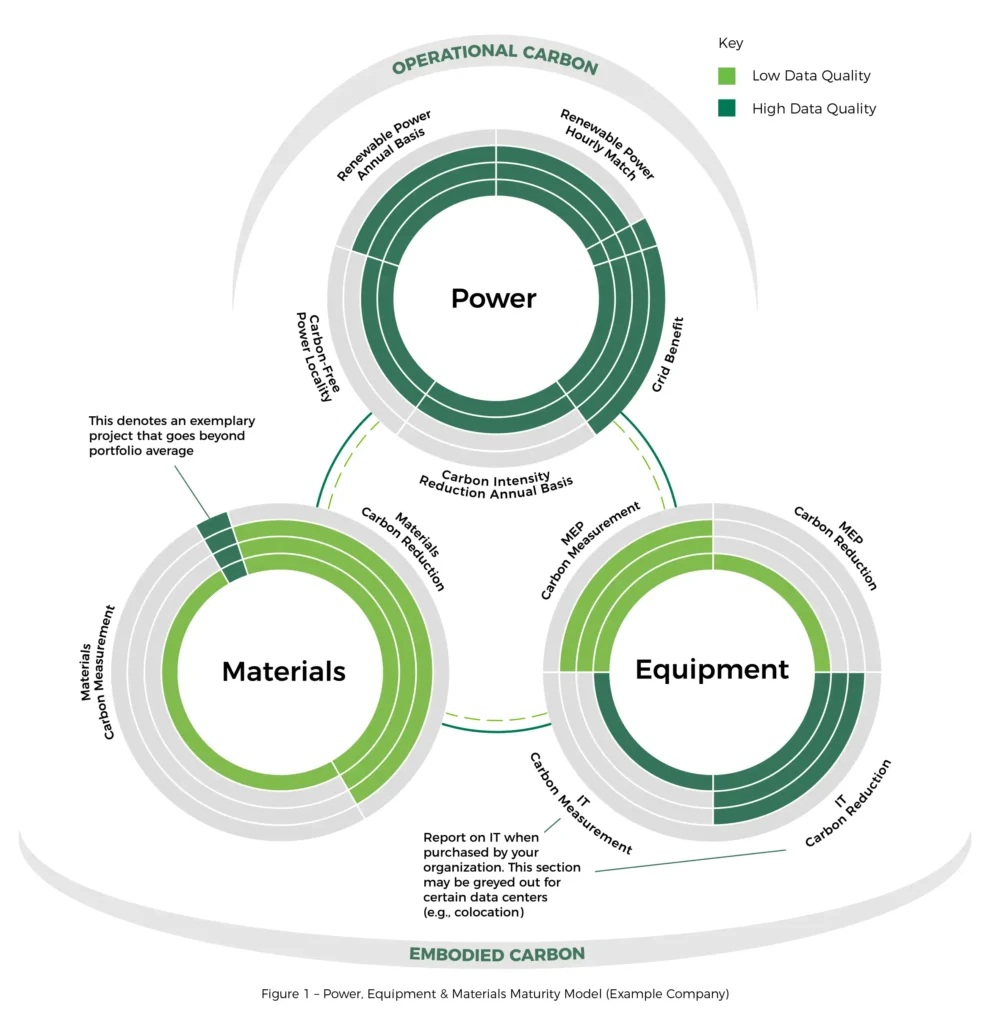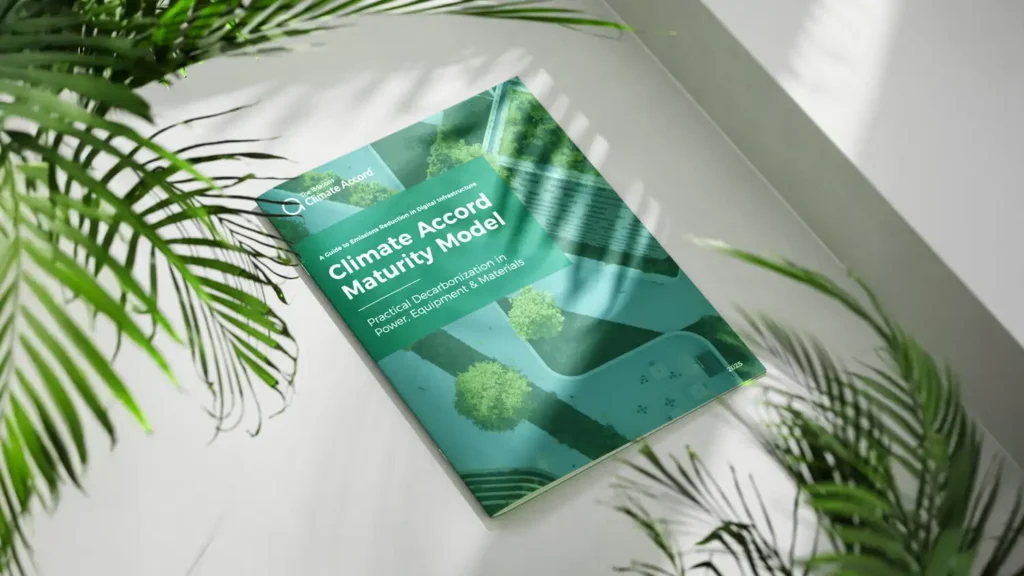Maturity Model
What is a maturity model and what is its purpose?
A maturity model is a framework for comparing a company’s facility maturity against industry best practices.
By introducing this Maturity Model, the iMasons Climate Accord codifies established best practices for decarbonization, or emissions reduction, in data center power, equipment, and materials, as set forth by our Governing Body and Working Groups and supported by our case studies.


Download Your Copy Now
Maturity Model: A Guide to Emissions Reduction in Digital Infrastructure
FAQ
1. How does a company utilize a maturity model?
This comprehensive, voluntary framework empowers data center service buyers to request comparable and summarized information for informed decision-making. It incentivizes service providers to offer higher performance aligned with customer demand.
Organizations can guide clear and actionable next steps by understanding where their decarbonization program stands, such as sustainable purchasing, capital investments, and/or operational changes.
This is not a certification system or a reporting framework but a roadmap of criteria for organizations to review their internal goals and learn from their peers in the industry how to align for greater decarbonization.
Additional details can be found within the publication.
2. How is it different from a standard or a certification?
A maturity model helps companies assess and improve over time, whereas a standard defines what must be done, and certification confirms that the standard has been met. A maturity model is a framework that helps assess performance against an ideal, “mature” state. It typically consists of several levels or stages, representing the progression from an initial, basic state to a more advanced, optimized state.
Unlike a standard or certification, a maturity model is a self-disclosure tool: there is no requirement for verification or approval by a standards body or independent third party.
3. What is the purpose of the Climate Accord Maturity Model? Why create it?
Our maturity model is meant to benchmark the maturity of digital infrastructure toward completion of the program’s Goal and Objectives.
From the start of the iCA, members have pledged to reduce carbon in materials, products, and power by applying carbon labels to products and data centers and measuring the carbon intensity of source energy consumed by these locations. They also agreed to create a maturity model to enable participants to track progress regardless of what stage of the journey they are on.
As our founder noted in Interglobix Magazine in 2022, “if you can measure it, you can improve it”.
4. How is it meant to be used, and how can I support it?
The Maturity Model is designed to be an internal tool for a company to understand its maturity toward the iCA’s Goal and Objectives. At present, companies are encouraged to self-disclose their maturity with the iCA, stakeholders, and the public. As the iCA is still determining the disclosure procedure, companies may determine the level of data and detail they wish to share.
Your company can support the Maturity Model by using it to assess your company’s assets’ decarbonization progress.
NOTE: The iCA team cautions that disclosures or related green claims should consider any and all legal requirements around such claims in their jurisdiction.
5. What resources are available to support the use of the iCA Maturity Model?
We are preparing a series of documents to better outline how an organization can use the Maturity Model, including but not limited to: A ‘tracking tool’, a series of proposed methodologies for calculating emissions, and a feedback collection form for companies using the tool and suggestions for future versions.
6. Where can I learn more about the iCA Maturity Model?
Check out the Resources section of our website.
7. What updates have been made?
February 19, 2025: Version 1.1 includes additional guidance on Scope 4 in Appendices A and B, and a revision to carbon offset approaches (these may be included/counted toward an organization’s reduction of embodied carbon).
February 12, 2025: Version 1 released.
